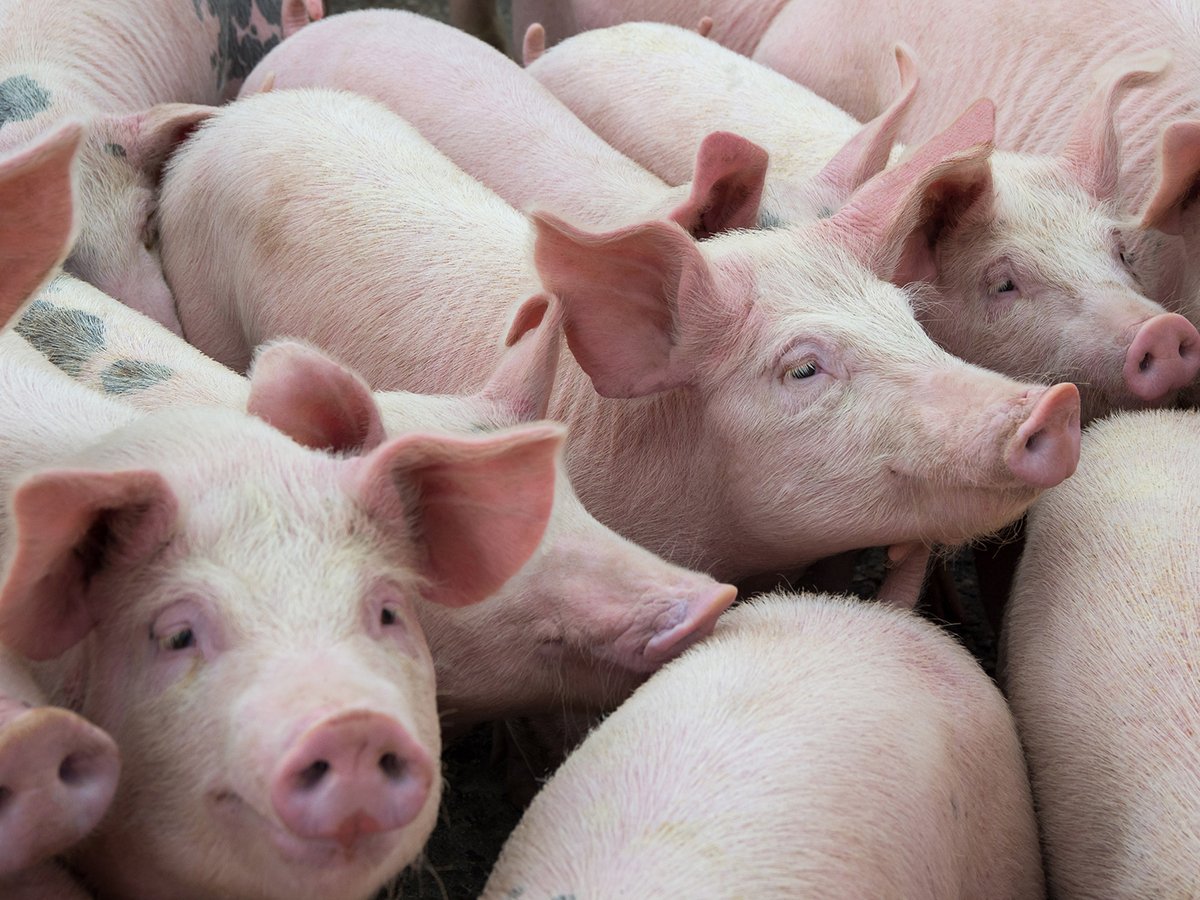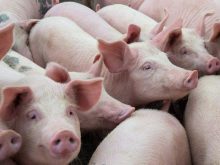BOZEMAN, Mont. — Danny Johnson looks like a cowboy, but he wants nothing to do with cows, or horses.
He’s been manager of the Flying D Ranch in the foothills of Montana for 16 years, and in that time Johnson has converted to bison.
“I could never go back to beef cows. They’re just not interesting to me,” he said during a tour of part of the 113,000 acre bison ranch owned by media magnate Ted Turner.
“Once you get through the up-front cost of whatever needs to be done, handling facilities or fences … they calve themselves, they basically rotate themselves. It’s so much less maintenance. They know what to do. They still have enough wild in them to be able to survive.”
Read Also

Quebec pork company calls for transparency around gene-edited pigs
Quebec-based pork company duBreton is calling for transparency around meats from gene-edited pigs on concerns that a lack of mandatory labelling will confuse consumers, and dilute certification claims. The organic sector is also calling for labelling rules.
And survive they do, all 4,200 head, plus the annual calf crop. The ranch has eight employees, who do the fencing, vaccinating, tagging and shipping.
Herding, through 11 pastures ranging in size from 8,000 to 18,000 acres, tends to take care of itself.
“When the herd starts telling us when to move, we move them. Otherwise, we are going to have a problem with our fences,” said Johnson.
“You get a feel for them. You can tell when they’re agitated.”
Bison manager Todd Traucht has learned that respect works best when moving bison. The ranch uses all-terrain vehicles, sometimes travelling 150 kilometres per day.
“We don’t really move them. We don’t use a lot of people. Four at the most, to move the whole herd,” Traucht said.
“Those old cows, they know where they’re going, just let them go. Start them in the right direction and let ’er go. And they just go on their own. They’re strung out for miles.”
Traucht is also a bison convert, having worked with cattle in the past. He’s been on the Flying D since before Turner bought it in 1989. A herd of 6,000 cattle used to be run on this ranch, but no longer.
“When the neighbours are all out at night with their spotlights, I’m home in bed,” said Traucht about calving season.
Calving trouble in bison is almost unheard of, as are other health problems. But there’s one exception, and it’s a big one.
The Flying D is under quarantine because of one positive test for brucellosis.
Russ Miller, general manager for Turner Enterprises Inc., said DNA tests showed elk transmitted the disease.
Plenty of wild elk can be found on the ranch, passing through or calving in its lower reaches, so eradication is improbable. An estimated 12 percent of Montana’s wild elk herd carries brucellosis.
“We know that we have brucellosis on this ranch because of elk, and if the wolves are forcing those elk into closer contact with the bison during calving season, that could have some real implications for us,” Miller said.
“We have basically come to the conclusion that … we’ve got brucellosis and we’re going to live with it.
“We’re going to have to live with the fact that the only animal that can leave this ranch is an animal that goes to slaughter.”
As for the wolves, Miller said monitoring the 21-member wolf pack is a full-time job for one employee.
They moved in from nearby Yellowstone Park through natural expansion, “and yes, they know how to eat buffalo. They’ve got just as discriminating a palate as the American public.”
Miller said 25 bison and 50 elk kills have been attributed to wolves since December 2009, although other kills may have been from wolves, bears or mountain lions that also live on the ranch.
“To this juncture, Ted (Turner) finds that an acceptable contribution to wolves,” said Miller.
The Flying D has two feedlots, each with a capacity of 499 animals to suit state regulations on size. The animals are fed oats and hay for 90 to 100 days before they are shipped for slaughter. Goal weight is 1,050 pounds for bulls and 850 lb. for heifers.
The cow to bull ratio is 12:1 in the breeding herd. Johnson said a 9:1 ratio is more effective, but extra bulls are kept for trophy hunts offered by the ranch.
The bulls tend to separate themselves from the herd after breeding season and the cows and calves arrange themselves in family groups of 150 to 200 animals.
Unlike many bison ranches, the Flying D and two other ranches in Turner’s 14-ranch bison empire do not wean. Miller said it has had mixed results.
It may depress conception rates later, but managers aren’t sure because there are other variables.
“On the expense side, I will tell you that no weaning is a cheaper way to operate.
“On the social side, which is really hard to quantify, we seem to see a little more settled herd, social groups, by leaving the calves on the cows.
“It’s hard to say what that lack of stress may ultimately end up in production. Maybe these animals perform better because they aren’t as stressed. But we have seen on at least one or two ranches some depression in conception rates when we have not weaned. We think it may be worth it, though.”
He said the ranch has a calving percentage of 76 to 80 with little management.
The Flying D has a conservation easement, so it will never be subdivided. Agriculture and commercial hunting are allowed.
The ranch is also working with the state fish and wildlife department on a brucellosis research project to determine whether bison that repeatedly test negative for the disease can still pass on latent brucellosis if introduced into other herds.
The ranch now hosts 85 bison originally from Yellowstone National Park, in which brucellosis is common. These 85 brucellosis-free animals are kept in a separate 13,000 acre fenced pasture, tested regularly for disease and monitored daily.
In return for labour costs and loss of the area to other grazing, the Flying D proposed that it keep 75 percent of all calves born throughout the five-year project.
The state would get all the original animals plus the other 25 percent of calves.
Miller said it seemed like a creative solution that would reduce costs to the state, which were an estimated $250,000 a year if it had continued to manage the project.
However, the proposal is now part of a still-unresolved lawsuit against the state of Montana. In the meantime, the bison continue to live on the Flying D.

















